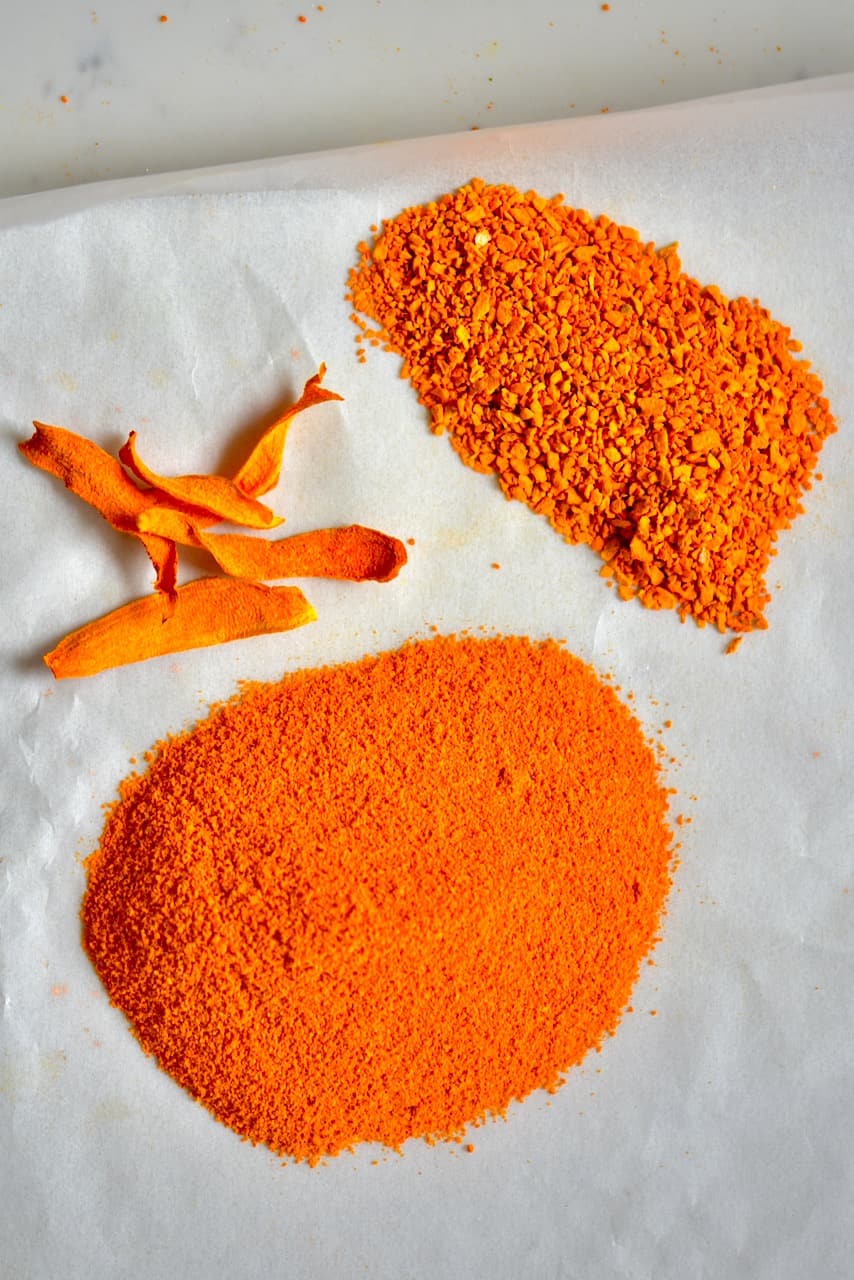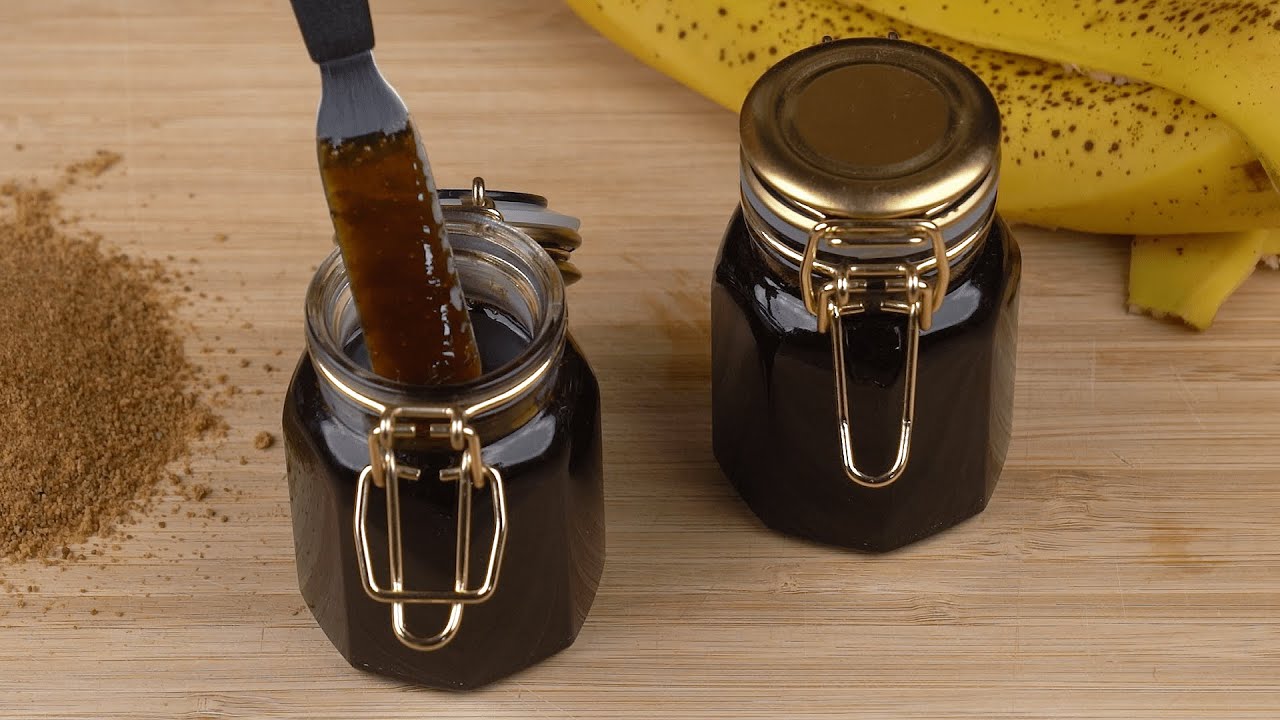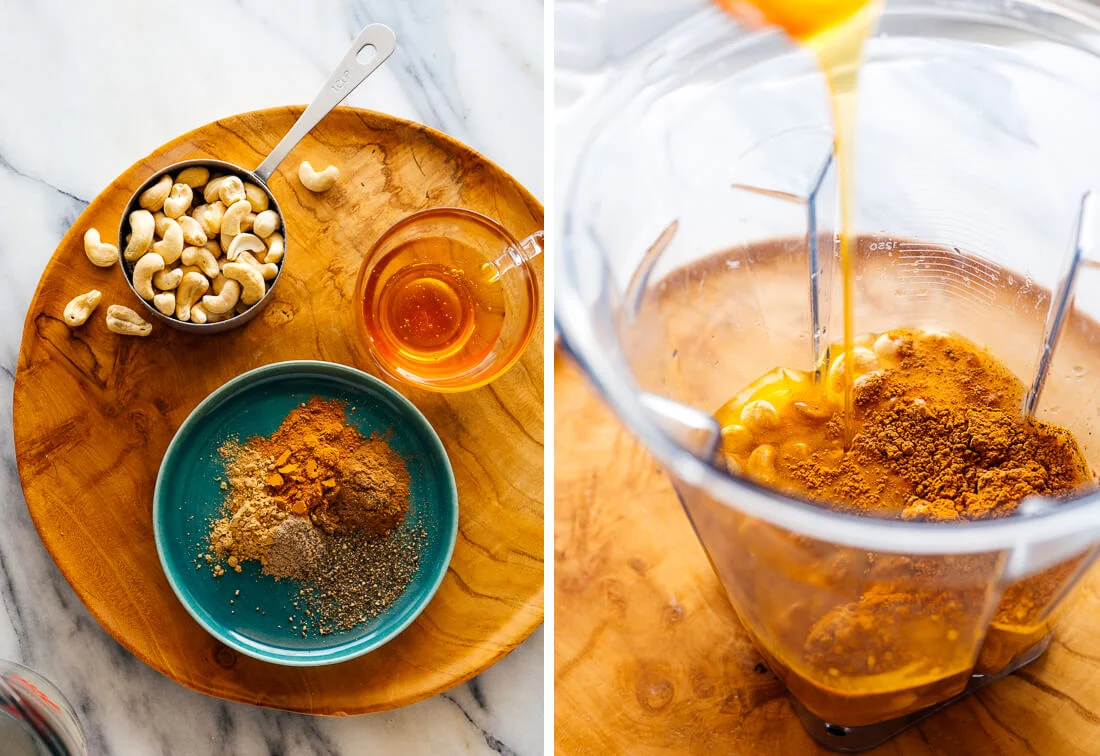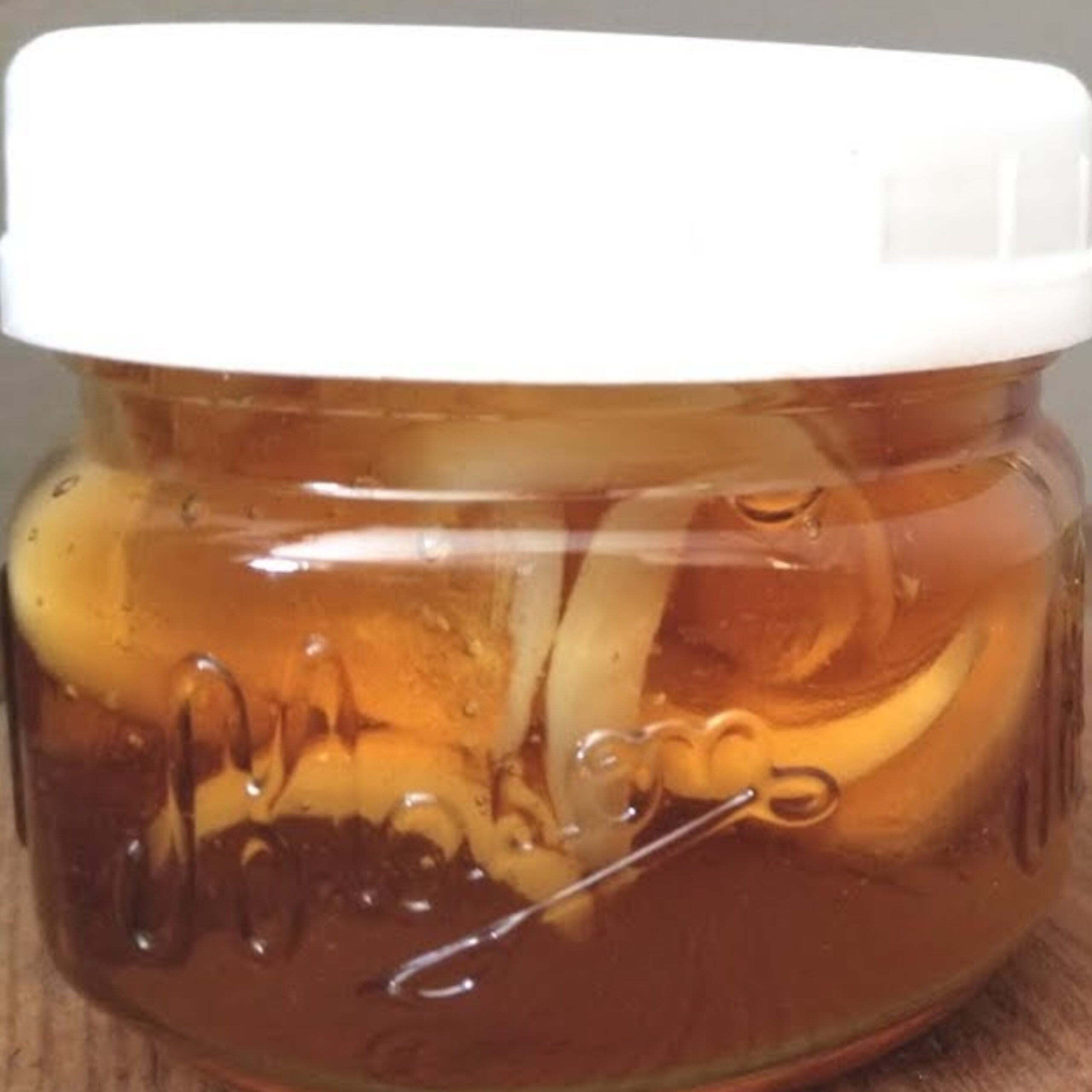
Making your own turmeric powder at home is a great way to ensure that you have a fresh, pure, and high-quality spice without any added preservatives or fillers. The process involves drying fresh turmeric roots and then grinding them into a fine powder. Here’s a step-by-step guide to making turmeric powder at home.
Ingredients and Equipment:
-
Fresh turmeric roots (as much as you want to make into powder)
-
A knife or vegetable peeler
-
A grater (optional)
-
A food dehydrator or oven
-
A spice grinder or high-powered blender
-
An airtight container for storage
Instructions:
1. Select and Prepare the Turmeric Roots
-
Choose Fresh Turmeric: Start with fresh, healthy turmeric roots that are firm and free from blemishes or mold. The fresher the turmeric, the better the quality of your powder will be.
-
Wash the Turmeric: Rinse the turmeric roots under cold water to remove any dirt. Use a brush to scrub the roots if needed.
-
Peel the Turmeric: Use a knife or vegetable peeler to remove the outer skin of the turmeric roots. You can leave the skin on if you prefer, but peeling can help improve the color and texture of the final powder.
-
Slice or Grate the Turmeric: Slice the peeled turmeric roots into thin pieces or grate them. Thinner slices or grated pieces will dry more quickly and evenly.
2. Dry the Turmeric
-
Using a Food Dehydrator: Place the turmeric slices or grated turmeric in a single layer on the trays of your food dehydrator. Set the dehydrator to a temperature of around 105°F to 110°F (40°C to 45°C). Allow the turmeric to dry for 8-12 hours or until completely dry and crisp.
-
Using an Oven: Preheat your oven to the lowest setting, usually around 150°F to 170°F (65°C to 75°C). Place the turmeric slices on a baking sheet in a single layer. Dry the turmeric in the oven for 2-4 hours, checking frequently to prevent burning. The turmeric is ready when it snaps easily and is completely dry.
3. Grind the Dried Turmeric
-
Cool the Turmeric: Allow the dried turmeric pieces to cool completely before grinding them. This will prevent moisture from causing clumping during the grinding process.
-
Grind the Turmeric: Use a spice grinder, coffee grinder, or high-powered blender to grind the dried turmeric into a fine powder. You may need to grind in batches if you have a large amount of turmeric.
-
Sift the Powder: To achieve a finer texture, sift the ground turmeric through a fine mesh strainer. Any larger pieces that don’t pass through can be returned to the grinder for further processing.
4. Store the Turmeric Powder
-
Transfer to an Airtight Container: Once ground and sifted, transfer the turmeric powder to an airtight container. A glass jar with a tight-fitting lid works well for this purpose.
-
Store in a Cool, Dark Place: Store your turmeric powder in a cool, dark place away from direct sunlight. Properly stored, the powder can last for up to a year, though it’s best to use it within 6 months for optimal flavor and potency.
Tips for Best Results
-
Use Fresh, Organic Turmeric: Organic turmeric roots are free from pesticides and other chemicals, making them a healthier choice for homemade powder.
-
Wear Gloves: Turmeric can stain your skin and clothes, so it’s a good idea to wear gloves when handling it, especially during the peeling and slicing stages.
-
Grind Thoroughly: To get a smooth and fine powder, grind the turmeric thoroughly and sift it to remove any coarse pieces.
-
Keep It Dry: Ensure that the dried turmeric and the storage container are completely dry before grinding and storing the powder. Any moisture can cause the powder to clump or spoil.
Uses of Homemade Turmeric Powder
-
Cooking: Use your homemade turmeric powder in curries, soups, stews, and other dishes for a warm, earthy flavor and vibrant color.
-
Golden Milk: Stir turmeric powder into warm milk along with honey and spices for a soothing and health-boosting drink.
-
Turmeric Paste: Combine turmeric powder with water, black pepper, and oil to create a turmeric paste that can be added to meals or taken as a supplement.
-
Skincare: Turmeric powder can be used in face masks and other skincare products for its anti-inflammatory and brightening properties.
Conclusion
Making turmeric powder at home is a rewarding process that allows you to enjoy the benefits of fresh, high-quality turmeric in your cooking and health routines. With just a few simple steps, you can create your own turmeric powder that’s free from additives and full of natural goodness. Whether you use it in the kitchen or for wellness purposes, homemade turmeric powder is a versatile and valuable addition to your pantry.





